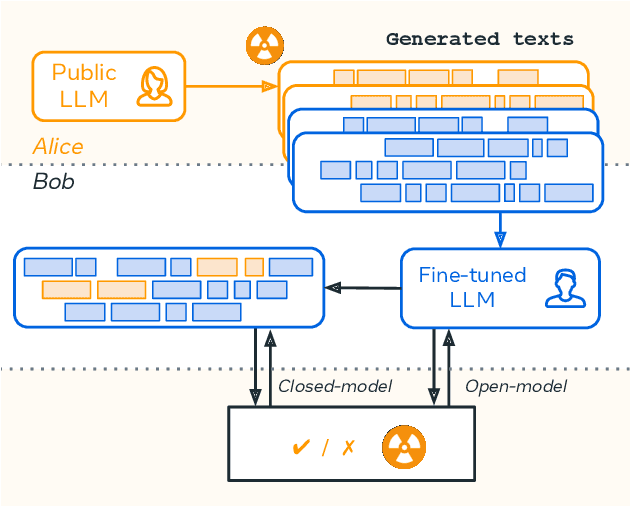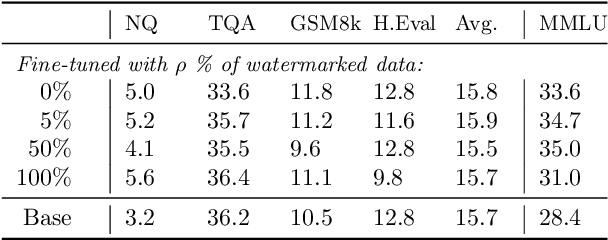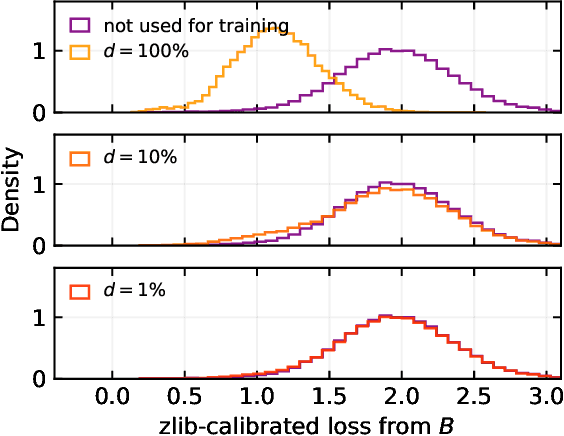Watermarking Makes Language Models Radioactive
Paper and Code
Feb 22, 2024



This paper investigates the radioactivity of LLM-generated texts, i.e. whether it is possible to detect that such input was used as training data. Conventional methods like membership inference can carry out this detection with some level of accuracy. We show that watermarked training data leaves traces easier to detect and much more reliable than membership inference. We link the contamination level to the watermark robustness, its proportion in the training set, and the fine-tuning process. We notably demonstrate that training on watermarked synthetic instructions can be detected with high confidence (p-value < 1e-5) even when as little as 5% of training text is watermarked. Thus, LLM watermarking, originally designed for detecting machine-generated text, gives the ability to easily identify if the outputs of a watermarked LLM were used to fine-tune another LLM.
 Add to Chrome
Add to Chrome Add to Firefox
Add to Firefox Add to Edge
Add to Edge